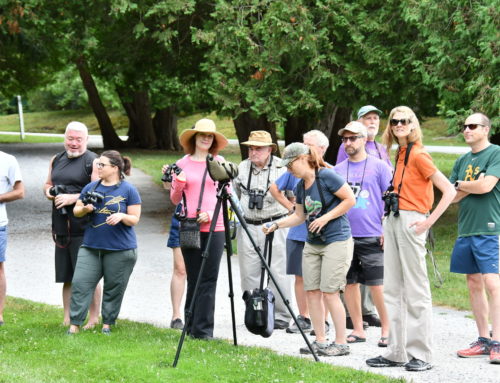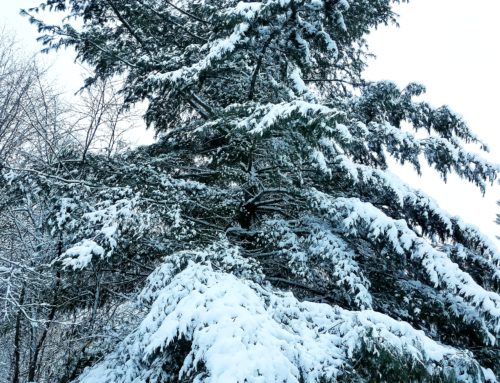Maple Sugaring with Christopher McBride
Written by Claudia
The 3rd Nor’easter in New England for this month and sugaring season is in full swing. What better way to spend the day than in a steamy hot sugarhouse like the McBride’s in Westford, Vermont, watching the sap boiling down to sweet maple syrup, nature’s delicious gift with all its nutritional benefits?
Most of you know Christopher as our brilliant magician, and many of our guests have had a chance to visit his sugaring operation during the summer months. Often it is difficult to imagine what is really going on during the sugaring process and how much work and preparation it involves. So I decided to bring you a snapshot of Christopher’s operation while it is in full force.
It takes warm days and freezing nights for sap to flow in maple trees. Recent days and nights provided just the perfect conditions, and the tanks at McBride Family Maple are full. Big snowflakes were falling from the sky as I passed a fully stacked woodshed, making my way through the snow down under a maze of tubing coming from everywhere, trekking through heavy snow, and finally stepping into the steaming warm sugarhouse where I was greeted by Christopher and his lovely wife Andrea.
The evaporator is all fired up and Christopher runs around checking temperatures at various stages, peeking into the boiler to make sure it has a nice even boil and that everything is flowing smoothly. Every 10 minutes he has to throw in another load of wood, as it is important to keep a constant temperature. Christopher uses about 17 cords of wood per season that he cuts and chops himself .
“It is like running a marathon, but the good stress!”
The McBrides use a special wood fired evaporator that provides a steady supply of oxygen to properly burn all of the gases being released by the wood, called a gasifier. By introducing large volumes of air from under the grates, and forcing that air up through the wood turbulence generated, it increases the rate of BTU’s, making a much more intense heat from the wood supply, as well as eliminating the black smoke from the wood fire coming out the chimney. With more of the available BTU’s are being burnt, less wood used to generate the necessary evaporation rate, and solar panels that power all other mechanicals, Chris is reducing the energy consumption to a minimum. He states that using a pipeline system to collect sap contributes to another positive impact on the environment. Tubing helps to improve the health and quality of his sugarbush by reducing the potential for over tapping, soil compaction and erosion, and repetitive root damage by collection vehicles during the most fragile season of your woodlot.
All in all:
“Each gallon of syrup we produce is made using sound ecological practices.”
Today’s sugar content is 1.8 Brix. His sap hydrometer quickly tells this tale.
“The hydrometer is what counts, no matter where on earth, on the moon, or on Mars.”
There is a direct correlation between how much sap it takes to make a gallon of syrup and the sugar content of the sap from which it’s being made.
Now how do you solve this math problem? “It is easy,” says Christopher. “All you do is divide the number eighty six by Brix. So today, it will take about 47 gallons of sap for 1 gallon of syrup.”
With 3,200 gallons of sap in the tanks, they will be boiling for about 7 hours with the help of their reverse osmosis filter system. Through this production method water is removed from maple sap. The filter press is a piece of equipment that uses pressure on heated sap to force it through layers of filters that syphon off water. The filter membrane allows for water molecules to escape. There are alternating layers of plate/frame filters and space for the filtered syrup to accumulate pressure before passing through to the next filter. The end product is a concentrated sap that then flows into the evaporator for final processing. This is another great tool to lower production time and costs. In addition, Christopher uses all the heated excess water that collects in a separate tank to clean all of his equipment at the end of the day.
Waiting patiently and observing Christopher’s sugaring marathon (there is not one dull moment), I am able to taste the first maple syrup of the day! With notes of butter and nuts, this most delicate flavorful amber syrup makes my taste buds all smiles on this wintry day, and I am not too upset anymore that the new snow cover had prevented me from working on the grounds at the Tyler Place that day.
With this in mind, and a sweet palette, I said goodbye and thank you to the McBride family for allowing me to visit their sugarhouse to bring a sweet, long Vermont tradition to your home. 



